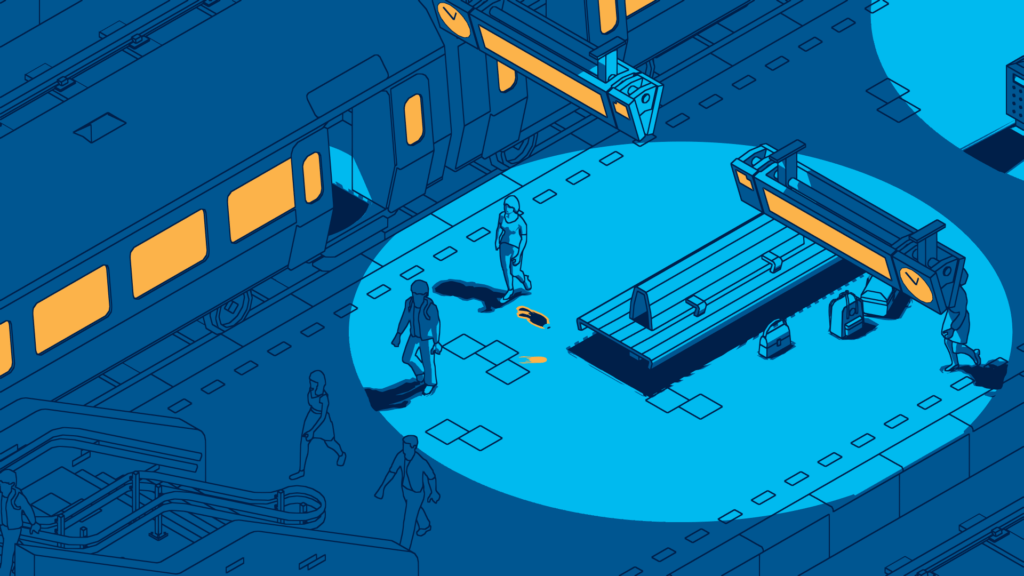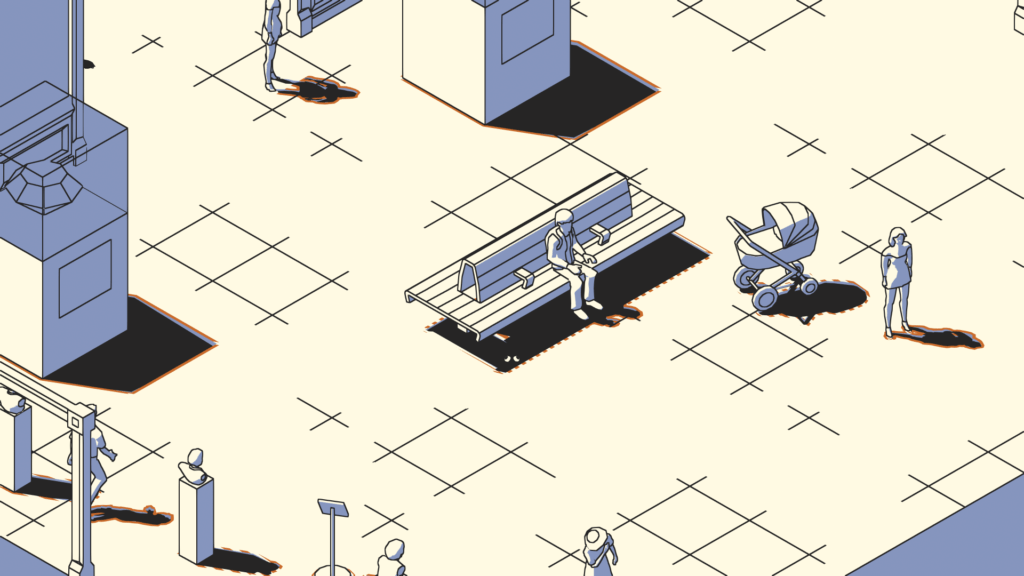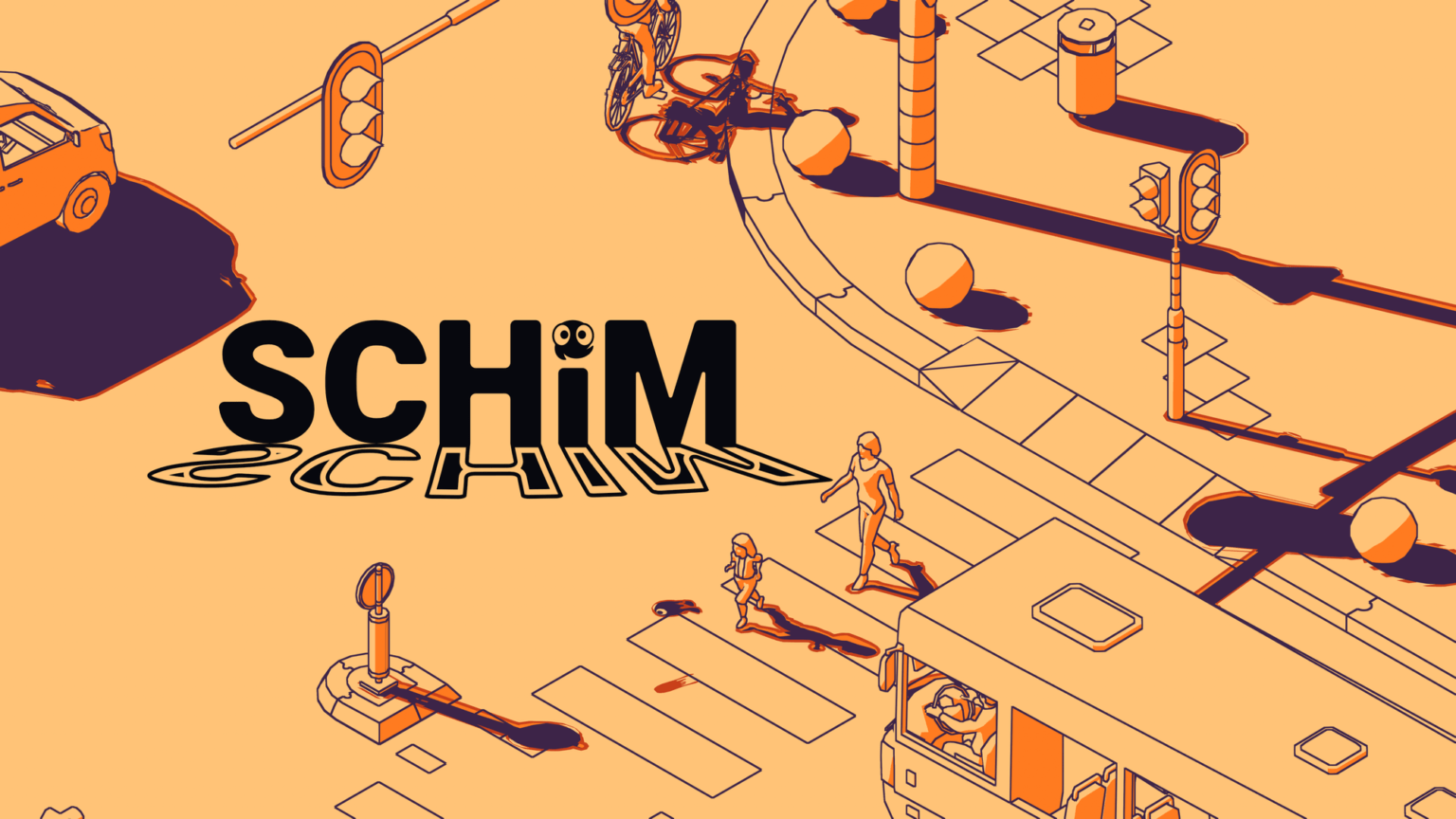This SCHiM review is based on the Steam version. SCHiM is also available on Xbox, Playstation and Nintendo Switch for $/€ 24.99.
SCHiM has been on my radar for quite a while. It has been on many indie showcases since its announcement and didn’t went unnoticed. Primarily because of the game distinct look, it is instantly engraved in the collective indie game scene’s mind. It instantly recognizable look and quirky gameplay makes it quite a unicorn in the current day indie gaming climate, which could use a distinctive and creative game.
Minimalistic by design
As said, what immediately sets SCHiM apart from other indie games is its unique visuals. For everyone familiar with Western European comics (or ‘strips’ as they are known here in the Lowlands) could notice some familiar aesthetics here. Creator Ewout van der Werf’s has mentioned to be inspired by Belgian and Dutch comics from the late 20th century that are part of the ‘Klare lijn’-style (‘Clear line’) and this inspiration is well conducted in SCHiM. As much as it is an ode to the style movement, it indirectly is also an ode to other late 20th century general design movements. Trends that starting in the 1960s in art, graphical design, and architecture were focussed on minimalism, high contrast and solid colors partnered with clear, symmetric and straight line work. The diverse palettes of two-tone colors used in SCHiM fit right into that design philosophy, even if it’s inexplicitly.
Yokai
Moving to the other side of the world, the concept of SCHiM is derived primarily from the Japanese folklore. A tsukumogami is a mythological creature that is believed to live in the shadows cast by all things. living and nonliving. In SCHiM (Dutch word for ‘cast shadow’ or ‘phantom’) our shadow creature is designed as a adorable little shadow frog and in its enthusiasm, has been detached from its schadow caster, a human. As a resulkt Schim lost it symbiote partner and this unnamed person is wondering around town, shadeless. You’re tasked with getting the ‘schim’ back to its rightful owner, which isn’t as easy as its sounds. Everytime you catch up, this dude seems to just gets away, keeping you on the back foot again.

Canals and bikes
Your schim is just a set of eyes lurking from the shadows, that outside of the safe darkness looks like a frog that fell into an inkpot. It cannot survive in the light, so it’s important to stay in the dark. It can jump out and hop over to other shadows. If your hop is just to short, the little shadow creature has a second shorter hop to reach its destination. This gives you the ability to maneuver your way through the streets, a factory, parks, and other environments. About these scenes; everything you see in the game has a distinct Dutch-ness to it. Canals, typical Dutch trains, and bikes. A lot of bikes. Bikes on the road, bikes chained to canal bridges, bikes on dykes and bikes in bike racks. It would be on point for SCHiM to have a bike wheel sticking out of one of the canals (as accordingly, 15,000 bikes get salvaged from Amsterdam canals on a yearly basis), but as far as I can tell, this is not the case.
Your little shadow lurker fortunately is not bound by a timer or other objectives, making the game a laid-back affair. To spice things up, every scene has some collectibles, although there is no obligation to actually get them. The context and narrative are set by small transitional bits where the shadow’s host is going about his life and getting into situations, indicating the direction you need to go to catch up. The actual hopping is a very satisfying mechanic and controls very well. As you progress through the scenes, you’ll eventually discover your schim’s ability to interact with objects, like switching streetlights, stoplights, forklifts, and pavement sign boards. These boards, which you will find all over any Dutch high street, enable you to use their flexibility to shoot yourself to the other side of the street. Especially later on, these interactions add some puzzle elements to the otherwise straightforward gameplay. For 80% of the time, interacting with the scene’s objects is just pure dicking around in a playful way, while the other 20% or so, helps you finding objects that bridge seemingly impassable gaps of light.

Storytelling
After the 3-4 hours SCHiM takes to finish, I was left with a bit of a feeling that the game missed some essential pieces of game design to really make its concept come full circle. Don’t get me wrong; it is endearing, beautifully stylized, and has a subtle sense of humor, all strictly established with animation. But as it is, it still feels like a gamified tech demo that misses, not all, but a part of its soul. Mainly because it lacks any sort of narration to add context. Not actual narration and dialogue, but a story that is more thought out and a more accentuated plot. You follow a typical day of a random person, but without anything to care about for the player, really. Until the end game, were a shimmer (pun intended) of a plot starts to materialize. As this shadow creature, you keep hopping and chasing down this character that just doesn’t do anything interesting, making your goose chase a bit of a drag and feels like pointless exercise. SCHiM would have been more interesting to play if you either discovered something about this character or established a more solid storyline and build up. As the opening scenes of the game features the little creature hopping between shadows of pivotal moments of its host growing up, I could only hope that would kick of a coming-of-age narrative of some sort. But by design, SCHiM kicks back in shallow mode after its opening scenes. Focusing on visual and game design and without memorable moments SCHiM doesn’t offer enough to completely carry the game to real heights.
Gamified Art Piece
That said, the game offers enough to present a more than decent experience. The mechanics are satisfying, and it provides a nice insight into the general Dutch way of living, as well. It’s fun to discover all the interactions and observe the behaviors of people, dogs, ducklings and other everyday things one could encounter. SCHiM at lease succeeded in making the incredibly mundane interesting. SCHiM has taken a lot of inspiration from games like Untitled Goose Game, albeit making this experience way more abstract, for better and for worse. I look back at playing SCHiM as a gamified art piece, and in that context, it really works.
SCHiM is an endearing, highly stylized experience that misses the beat on one or two critical elements in its design. It's visuals and controls motivate you to play through to the end, but actually having something to care about would evolve this game into the upper echelons of indie game development.
The Good:
- Beautifully designed
- Nice introduction to the Netherlands
- Great controls and hop mechanic
- Subtle humor in the animations
The Bad
- Falls a bit short in the narration and story department
- Drags on a bit too long


